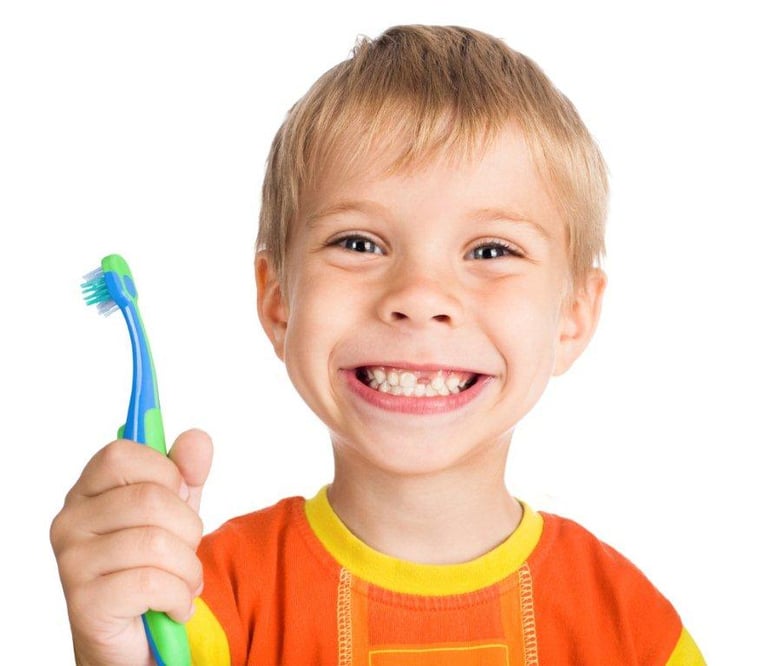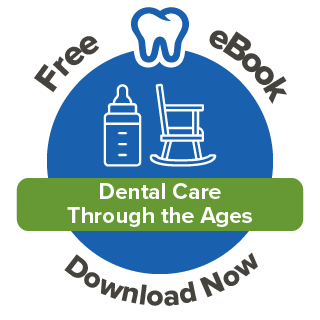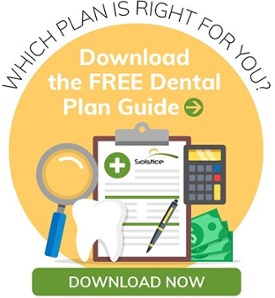By Andrew Hickey on Nov 6, 2023 @ 11:59 AM
Oral health is defined by the CDC as "the health of the teeth, gums, and the entire oral-facial system that allows us to smile, speak, and chew."
Educating your kids about oral health literacy is essential. Once they know more your children will be encouraged to maintain good oral hygiene. It is easy to scare kids (and adults) with the fear of cavities or pain. But instead, the goal is to create an everyday routine that your child can keep up.
Children often mimic their parents. So, if they see how easy it is for you, they are more likely to join in. With a gentle approach and some creativity, you can make flossing and brushing enjoyable. Keep reading for tips that you and your family can use.
Key Takeaways:
- You can start teaching oral health from infancy.
- Dentist visits begin at age one.
- Keep the language simple and have your child ask questions.
- Use fun books and sticker charts as incentives.
- Have your child choose their toothbrush and toothpaste.

Start Early:
You should begin discussing oral health with your children at an age-appropriate level. The American Academy of Pediatric Dentistry recommends starting oral hygiene practices even before your child's first tooth appears.
You can wipe your baby's gums with a clean, damp cloth after feeding. This helps to remove milk or formula residue and get them used to the sensation. As soon as your child's first tooth appears, you can begin using an infant toothbrush very gently. You should use a tiny amount of fluoride toothpaste about the size of a grain of rice.

Use Simple Language and Encourage Questions:
Explain oral health concepts in terms your child can understand. Avoid using jargon or complex terminology. One simple and effective way to make the information relatable is to invent a fun story. For example, you can have a character like a superhero toothbrush or magical dental floss. It uses its powers to fight off "sugar bugs" in the mouth. Be sure to involve your child in creating the story.
It is all about creating a non-judgmental environment where your child feels comfortable participating and asking questions about their oral health.

Discuss Nutrition:
You can talk with your child about the importance of eating food that is beneficial for their teeth. Who doesn’t love a treat?! This includes a balanced diet of fruits, vegetables, proteins, and whole grains.
Cheese is a wonderful place to start for many reasons. It helps stimulate saliva, which washes away food particles in the mouth. There is also food that contains water. You’ve got pears, cucumbers, apples, and carrots to name a few.

Dentist Visits:
By age one your child should have their first dental visit. This will help identify any potential issues and establish a dental care routine. Consistency helps create habits.
You can empower your children by Involving them in their appointments. Explain the purpose of dental check-ups and tooth cleanings. Before, during and after the appointment make sure to address any fears or concerns. You want your child to associate their visits to the dentist with positive experiences.

Fun Books and Resources:
Many kids love reading, especially when there are pictures involved. You can find plenty of age-appropriate resources designed to supplement your discussions in an engaging way. There are books like Brush, Brush, Brush! by Alicia Padron and videos such as 10 Ways to Brush Your Teeth by Life Hacks.
For even more fun you can do a science experiment with hard boiled eggs to simulate tooth enamel. You can also instruct kids about the importance of flossing by practicing their technique on toy blocks.

Get your Child Involved:
To get your children even more engaged in their oral health you should let your child pick out their own toothbrush and toothpaste. There are many options with colorful designs and popular characters. Plus, there are kid-friendly toothpaste flavors like strawberry and bubblegum, which can make brushing even more appealing.
You can also reward their efforts by playing a favorite song while they brush. This can ensure they brush for the whole two minutes recommended for brushing teeth.
Create a reward system to encourage your children when they are being consistent. They can put stickers on a chart and earn small rewards along the way or once the chart is full.
Remember to be patient and gentle when instructing your child about their oral care. Positive reinforcement goes a long way.
By using all these strategies in your child’s oral health journey, you can help them develop the knowledge and skills they need to make informed, healthy choices throughout their life.
Want to have Solstice benefits? Call our sales team at 877.760.2247 or email Sales@SolsticeBenefits.com
Already have Solstice benefits? See your plan details by going to https://www.mysmile365.com/ or calling us at 1.877.760.2247.





comments